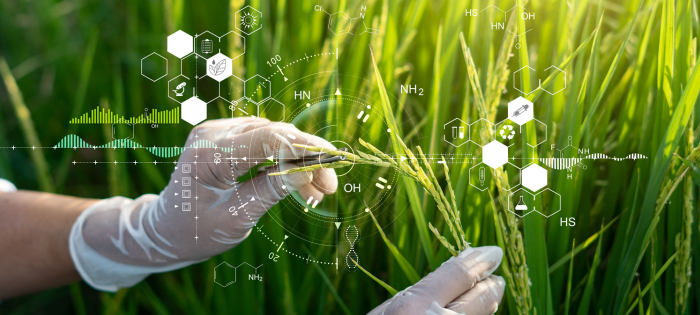
Food Safety
Comments: No Comments
The National Bioengineered Food Disclosure Standard defines bioengineered foods (a/k/a genetically modified organisms (GMOs)) as “foods that contain detectable genetic material that has been modified through certain laboratory techniques and for which the modification could not be obtained through conventional breeding or found in nature.”
Genetic engineering allows scientists to take a beneficial gene (e.g., insect resistance or drought tolerance) and transfer it to a plant. Genetic modifications can create many desirable results, including higher crop yields, less crop loss, longer storage life, better appearance, enhanced nutritional value, or some combination thereof.
Genetic engineering can also be used to create a plant-based protein. The Food and Drug Administration (FDA) is aware that some developers are now exploring transferring genes for proteins that are known food allergens (including the “Big 9”) into new plant varieties for foods. Managing this introduction of food allergens into bioengineered food is a significant concern.
Regulatory Framework
The FDA, Environmental Protection Agency (EPA), and U.S. Department of Agriculture (USDA) work together to ensure bioengineered foods are as safe and healthful for humans, plants, and animals—or even more so—as their non-GMO counterparts.
- FDA ensures those who produce, process, store, ship, or sell bioengineered foods or foods with bioengineered ingredients meet the same food safety standards as all other foods. FDA’s voluntary Plant Biotechnology Consultation Program allows developers to work with FDA on a product-by-product basis to evaluate the safety of bioengineered foods before they enter the market.
- EPA regulates the safety of the substances that protect bioengineered plants to make them resistant to insects and disease and monitors all types of pesticides used on crops.
- USDA Animal and Plant Health Inspection Service (APHIS) establishes regulations to ensure bioengineered plants do not harm other plants.
Warning Letter
In April 2023, FDA issued a letter to developers and manufacturers who intend to transfer genes for proteins that are known food allergens into new plant varieties for foods. The letter serves as an important reminder that developers of these new plant varieties are obligated to make sure the products they market are safe for consumers and implement all measures needed to comply with the Food, Drug, and Cosmetic (FD&C) Act.
If not appropriately managed, the development of these plants could result in the presence of an unexpected allergen in the bioengineered food product. And if an unexpected allergen enters the food supply, there is real risk of a severe or even life-threatening allergic reaction and, subsequently, needing to recall affected products.
Early Actions
The FDA implores, “We are specifically reminding those developers who are now exploring development of these types of plant varieties of their responsibility for food safety. In particular, we are reminding them to consider the allergenicity issues related to their products, and how they would be stewarded from production to manufacturing to consumption so that they do not inadvertently or unexpectedly enter the food supply.”
The FDA is asking developers to consider the food safety risks posed by such allergens and to plan early in development to manage those risks. Developers who intend to create these plant varieties using proteins that are food allergens need to:
- Take advantage of the Plant Biotechnology Consultation Program early in the development process to ensure new varieties meet FD&C Act requirements and consumers are protected.
- Develop a robust risk management plan that includes significantly stronger mitigation strategies and practices (e.g., crop segregation) to provide assurance that foods containing the transferred allergen are not mixed with other foods.
- Consider whether the entire supply chain can maintain appropriate conditions to prevent allergens from inadvertently entering the food supply.
- Properly label bioengineered foods by declaring the presence of an allergen on the food label.
